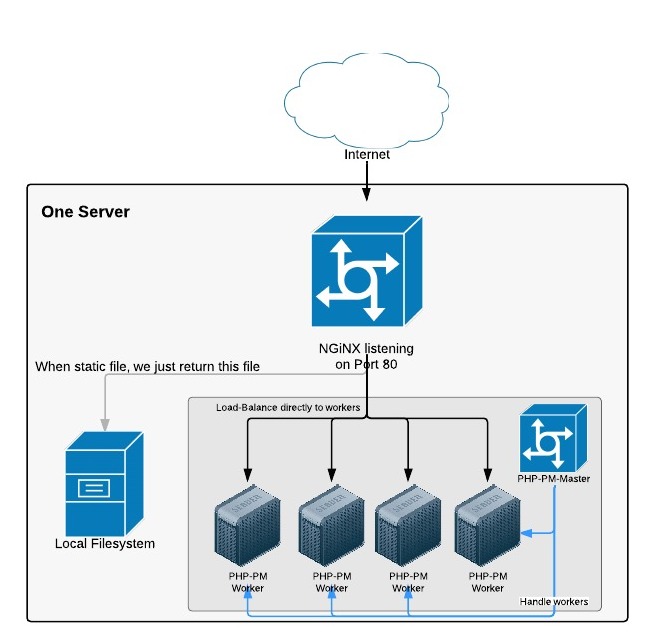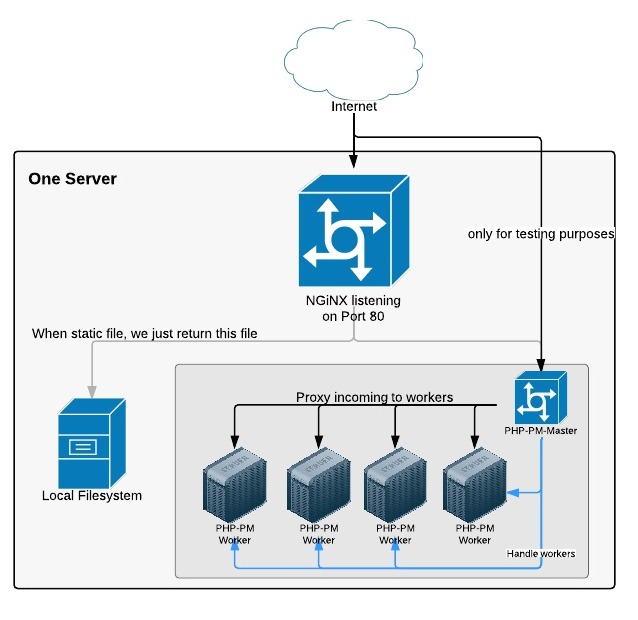PHP-PM is a process manager for Request-Response Frameworks running in a ReactPHP environment. The approach of this is to kill the expensive bootstrap of php (declaring symbols) and bootstrap of feature-rich frameworks.
More information can be found in the article: Bring High Performance Into Your PHP App (with ReactPHP)
./bin/ppm start --help
Usage:
start [--bridge="..."] [--port[="..."]] [--workers[="..."]] [--bootstrap[="..."]] [--app-env[="..."]] [working-directory]
Arguments:
working-directory The working directory. (default: "./")
Options:
--bridge The bridge we use to convert a ReactPHP-Request to your target framework.
--port Load-Balancer port. Default is 8080
--workers Worker count. Default is 8. Should be minimum equal to the number of CPU cores.
--app-env The that your application will use to bootstrap.
--bootstrap The class that will be used to bootstrap your application.
--help (-h) Display this help message.
--quiet (-q) Do not output any message.
--verbose (-v|vv|vvv) Increase the verbosity of messages: 1 for normal output, 2 for more verbose output and 3 for debug
--version (-V) Display this application version.
--ansi Force ANSI output.
--no-ansi Disable ANSI output.
--no-interaction (-n) Do not ask any interactive question.$ ./bin/ppm start ~/my/path/to/symfony/ --bridge=httpkernelAll worker start a own HTTP Server which listens on port 5501, 5502, 5503 etc. Range is 5501 -> 5500+<workersCount>.
Example config for NGiNX:
upstream backend {
server 127.0.0.1:5501;
server 127.0.0.1:5502;
server 127.0.0.1:5503;
server 127.0.0.1:5504;
server 127.0.0.1:5505;
server 127.0.0.1:5506;
}
server {
root /path/to/symfony/web/;
server_name servername.com
location / {
if (!-f $request_filename) {
proxy_pass http://backend;
break;
}
}
}
This setup is slower as we can't load balance incoming connection as fast as NGiNX it does, but it's perfect for testing purposes.

